Have you ever caught a sea robin? If you spend any amount of time bottom fishing off Cape Cod then you probably have caught many!
Over the years I've caught a bunch of sea robins while fishing in Nantucket Sound for squid, off Monomoy Island while fishing for fluke, and in Buzzard's Bay while fishing for black sea bass.
Instead of tossing the sea robins back into the water, I decided to bring them home, in an effort to try and learn how best to filet sea robin and how to cook sea robin.
I am excited to report that sea robin is quite delicious, and I have a whole new respect for this amazing little fish. Aside from tasting delicious, sea robins can even "walk, talk and fly" - more on that later!
To learn more about the amazing sea robin, and my first-ever experience eating sea robin, please scroll below. You can also jump to a specific section by clicking on this helpful table of contents.
Sea Robin Biology
Searobins have a firm, bony head, and two dorsal fins. Their pectoral fins open up like fans, and searobins use these pectoral fins to push forward in strong tides when swimming through the water. Searobins are essentially a saltwater fish with wings!
These wings (as we will call them) are also a defense mechanism. When sea robins sense trouble, they will unleash and spread their wings. Predators are likely to feel threatened, plus sea robins can quickly blend into their surroundings with their wings spread-out.
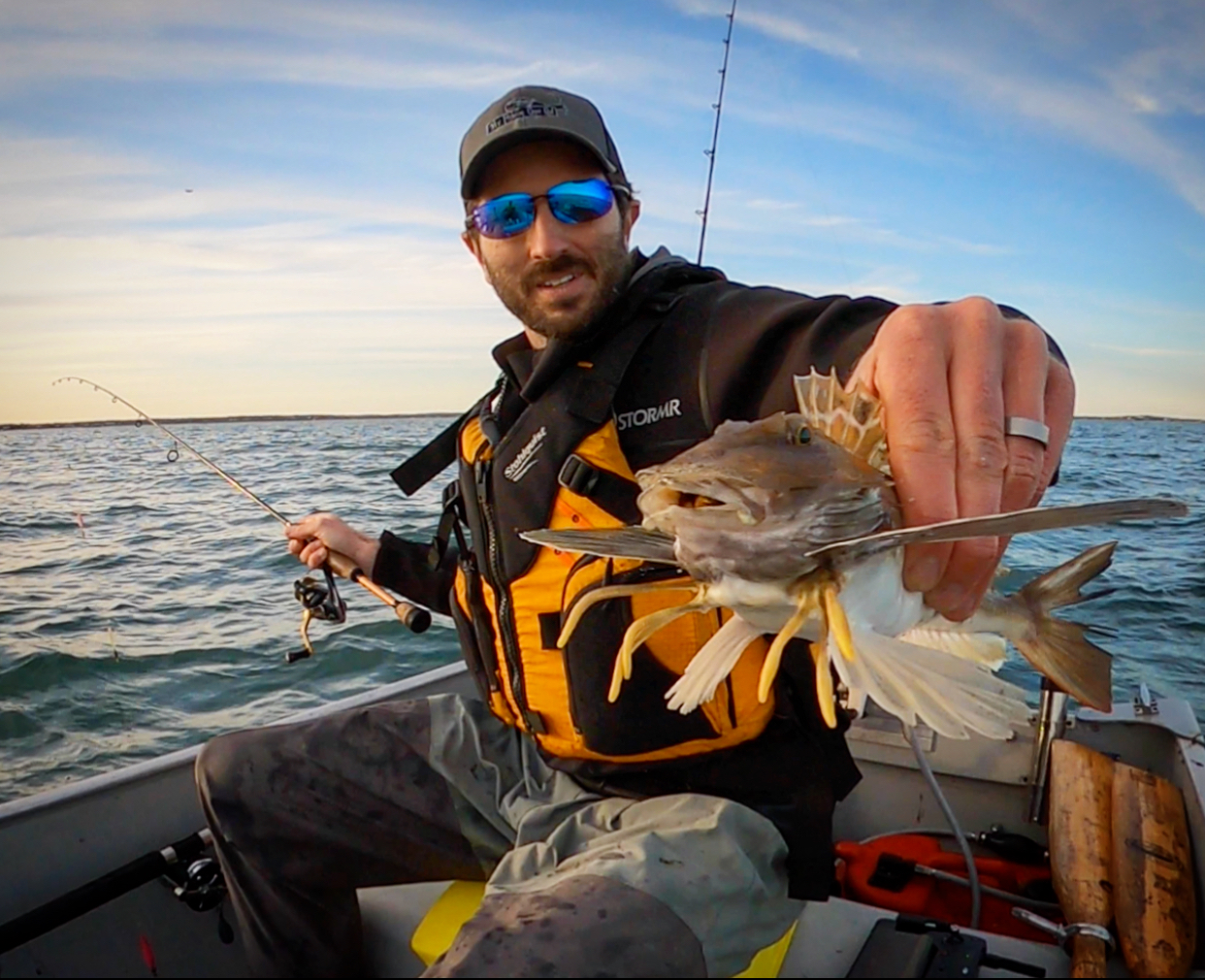
In addition, I have to imagine that the searobin's bony head and armor-plated body makes them difficult and uncomfortable prey items for predators to swallow. This is also why I recommend wearing gloves when cleaning searobin, to protect your hands from their spikes and thorns.
Sea robins also like to "talk". They are very vocal and create sounds using their swim bladders and attached muscles. The sound is transferred using audio waves through the water.
Off the coast of Cape Cod, the most commonly caught types of sea robin are the Striped Sea Robin and the Northern Sea Robin.
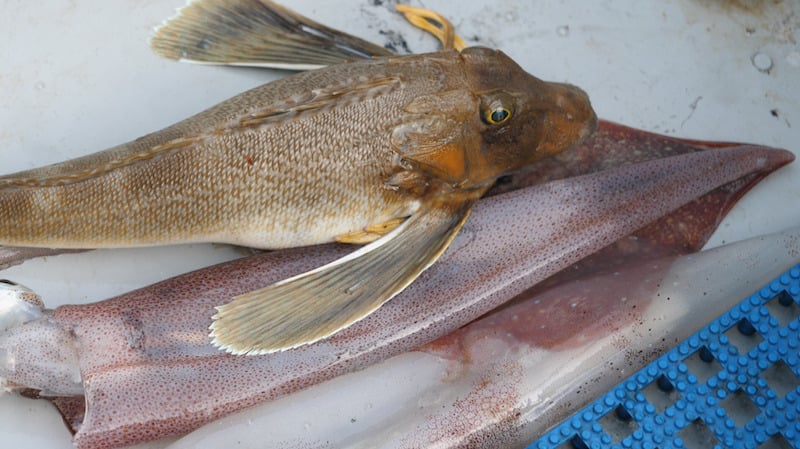
According to this online source, "The striped searobin has two narrow dark stripes running along each side from the head towards the tail. The northern searobin may be plain or mottled on its sides, but lacks distinct stripes."
Sea robins have been discovered worldwide in both temperate and tropical waters. Sea robins are very much present in the Atlantic Ocean and you can find them from Florida to Nova Scotia.
After doing some online research, I believe that during the 2021 season, I caught both Striped Sea Robins and Northern Sea Robins while fishing my home waters off the coast of Cape Cod.
Northern Sea Robins
Here is a photo of what I believe to be a Northern Sea Robin, which I caught during the first week of May off the south coast of Barnstable in Nantucket Sound.
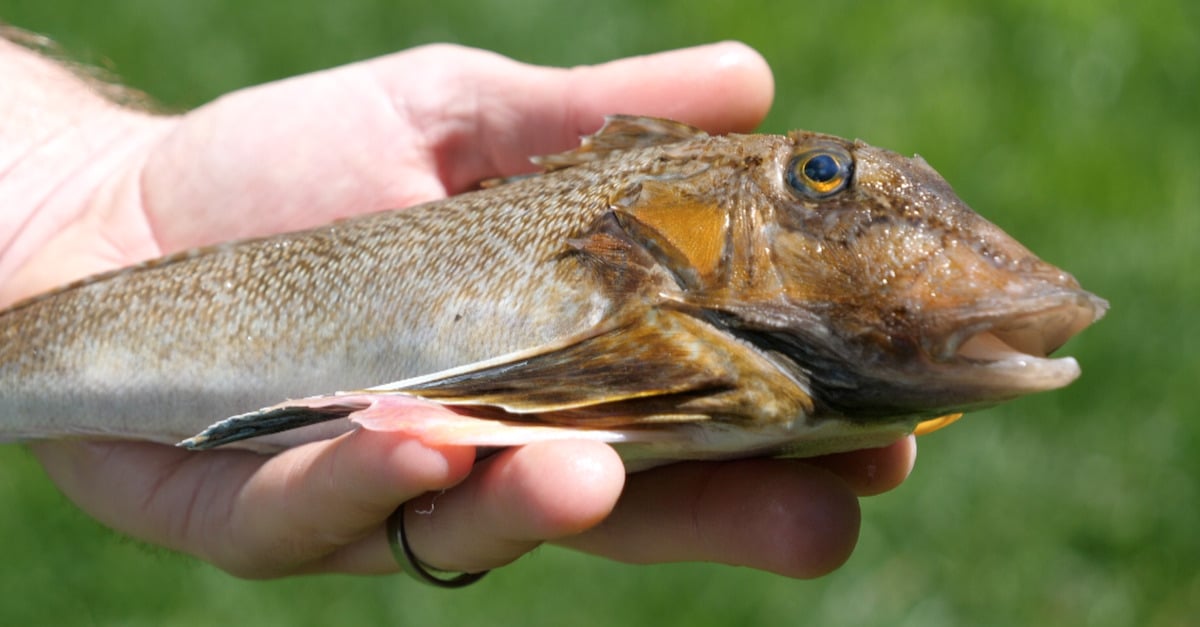
According to what I've researched, shallow waters with a sandy bottom and the most likely places to catch northern sea robins. The inshore water off Cape Cod is the perfect home for these beautiful creatures.
You will find Northern Sea Robins perusing through the water with their two small pelvic fins, which look like legs. These fins give the illusion that the sea robins are walking. It's for this reason that sea robins are commonly referred to as a saltwater fish with legs.
You can clearly see this "walking" behavior of the sea robin by watching the video above. This footage was filmed in about 25 feet of water in the rips off the coast of Monomoy Island during the summer of 2021.
I believe that the sea robins featured in the video above are Northern Sea Robins, because they do not have two defined stripes running down their sides. You can learn about Striped Sea Robins below.
Striped Sea Robins
Later in the season during August, I caught several big Striped Sea Robins while fishing for fluke off Monomoy and at the Nantucket Shoals.
Striped Sea Robins do look different than Northern Sea Robins. For example, in the photo below you can clearly see the two stripes on the side of the sea robin.
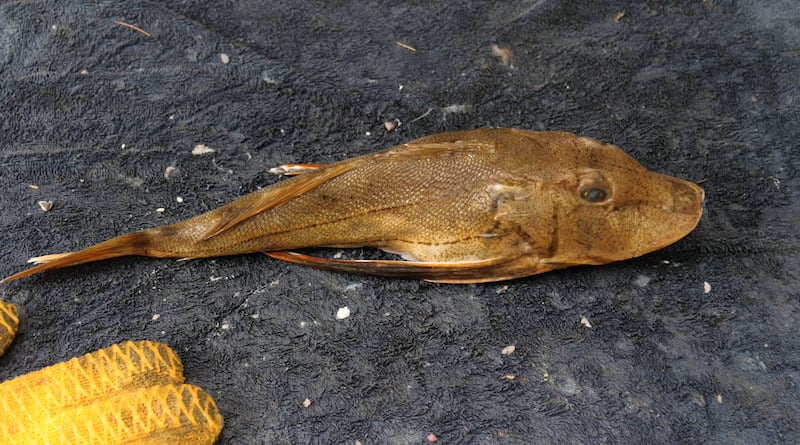
I have also seen Striped Sea Robins in Buzzard's Bay during the spring, while trying to film and photograph fish underwater. If you look close at the image below, you can clearly see how the Striped Sea Robin uses its legs to "walk" along the bottom.
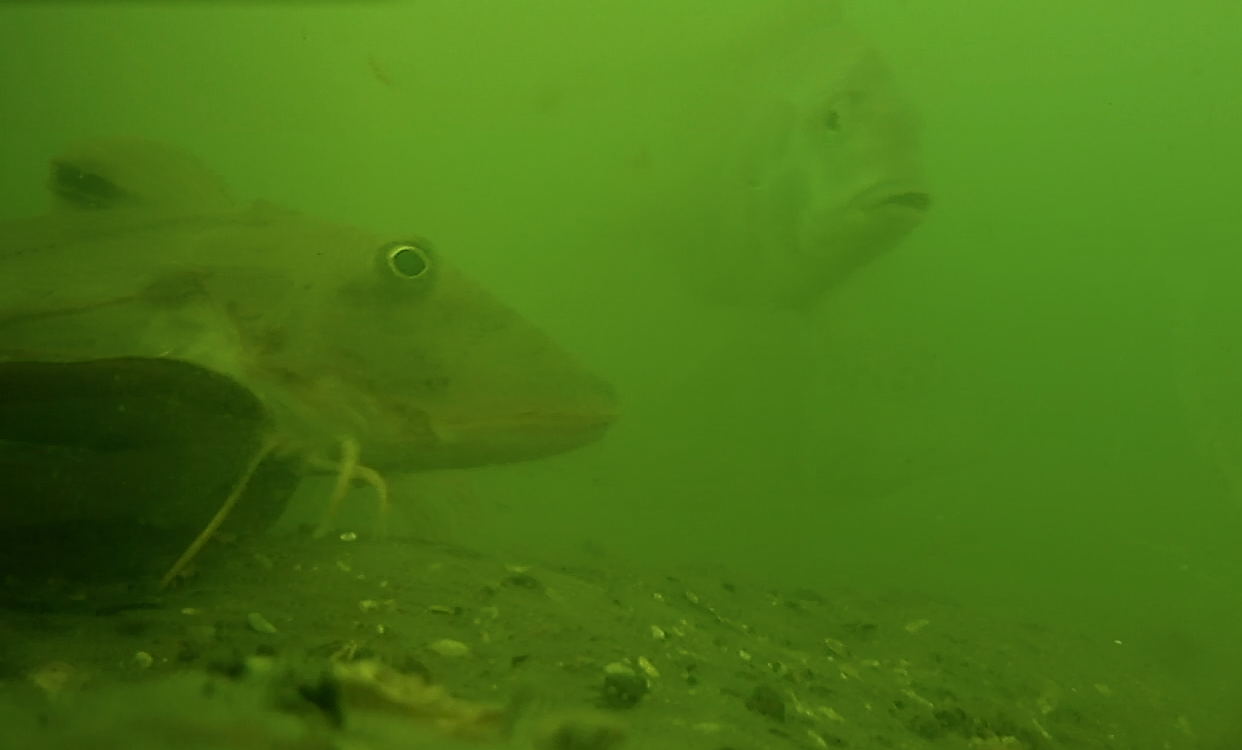
According to Wikipedia, "The striped searobin can be found from Nova Scotia to northern Florida. They live mostly on sand bottoms from inshore estuaries to about 180 m depth. Also occasionally found above reefs."
Striped searobins are bright in color, and their fins have unique patterns on them, almost like fingerprints for humans. Most of the sea robin’s fins are red-colored with bright edges.
Searobin Habitat
Searobins are most often encountered by anglers fishing inshore. It is not uncommon to find searobins in very shallow water, sometimes of less than 5 feet, very close to the shoreline. In past years I have caught big striped searobins while fishing from shore off the beaches of Mashpee.
Nevertheless, these versatile creatures can also be found swimming in the open ocean. Sea robins are capable of diving down to depths of over 200 feet. They are known to hide behind small rocks and sand mounds to stay protected from predators, hide from the current, or ambush prey.
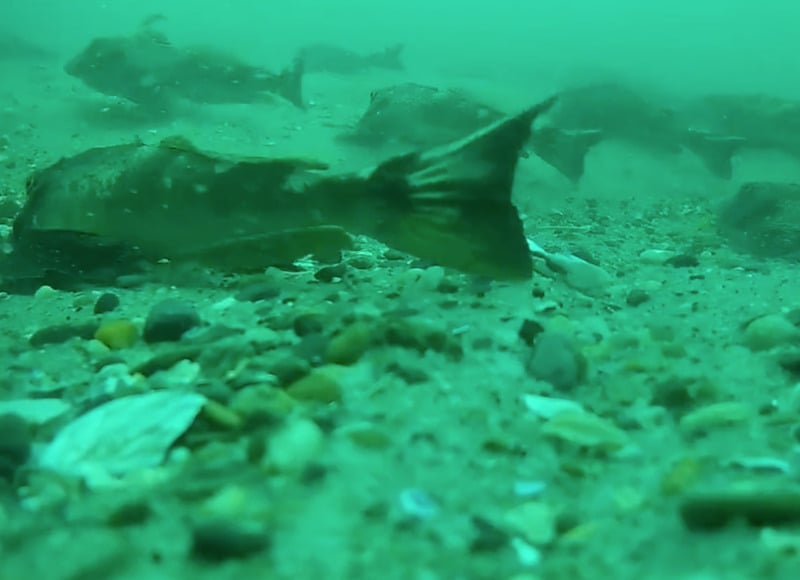
Striped Searobins and Northern Searobins are carnivores. They like to munch on invertebrates, small fishes, and crustaceans. Searobins are most commonly found along the bottom, however they will occasionally come to the surface to feed.
Searobins will also come to the surface during their breeding season. According to this online source, the sea robin procreates during the summer months of July, August, and September. The adults do their best to remain in water which is a stable temperature of 71 degrees because that temperature helps the eggs to mature and hatch.
Furthermore, when sea robins are kept in aquariums, their natural bottom feeding behavior is very helpful in cleaning the tank, since they are likely to scavenge and eat the scraps at the bottom of the aquarium.
Sea Robin Fishing
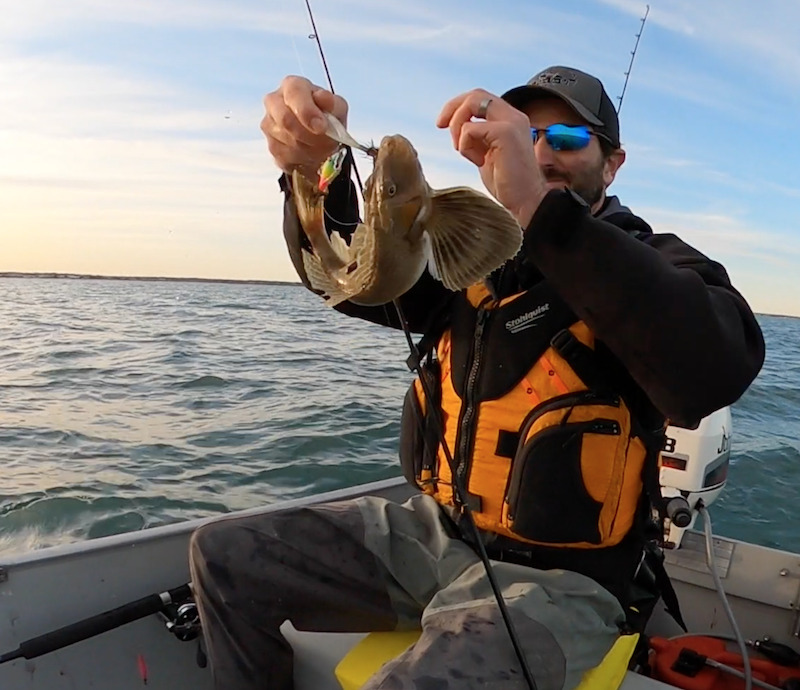
Very few anglers target sea robins, and they are usually caught on Cape Cod accidentally while fishing for other species like fluke or black sea bass.
Sea robins will readily attack a variety of different lures and baits. Over the years I have caught sea robins on bucktail jigs, green crab, squid, and squid jigs. I've even heard about sea robins being caught on swimming lures, topwater poppers, and even with fly rods.
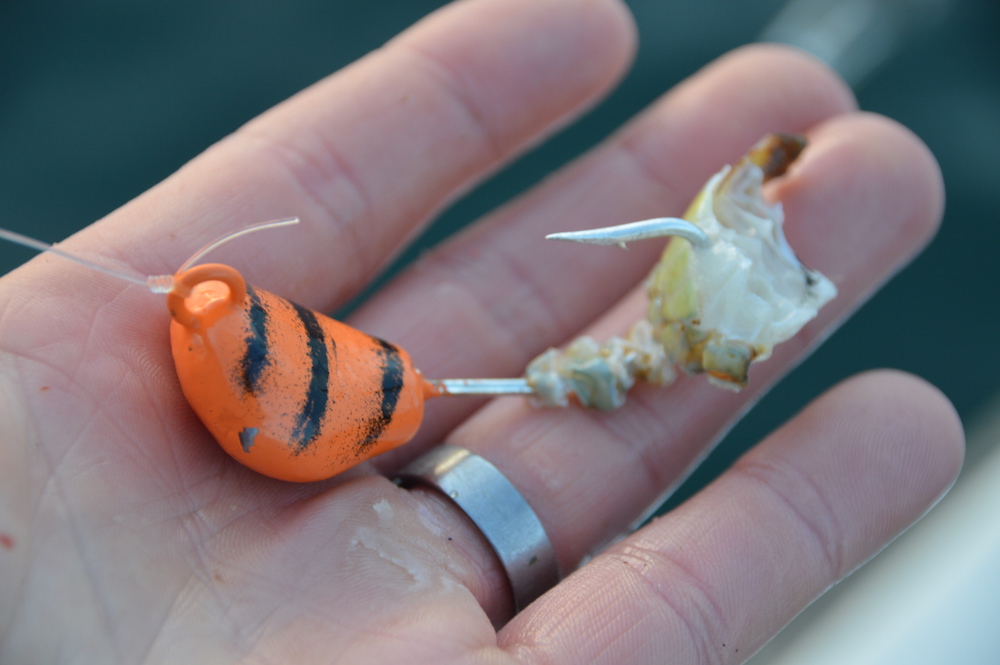
Furthermore, you are most likely to catch sea robins while fishing spots that are popular with other species. You could say sea robins like to have an active social life. For example, you are very likely to catch a sea robin around schools of scup and black sea bass.
Last year I was surprised to find large schools of Northern Sea Robins while fishing the sandy shoals off Monomoy Island. They are also commonly caught in Nantucket Sound, Vineyard Sound and Buzzard's Bay.
However, I am yet to a searobin in the Cape Cod Canal and I have also not caught many in Cape Cod Bay. If I was going to target sea robins, then I would probably put my focus on Buzzard's Bay.
Can You Eat Sea Robin?
Many call searobin a trash fish. However, at My Fishing Cape Cod we do not call fish derogatory names. Nevertheless the question remains - can you eat sea robin? The answer is most definitely yes!
A sea robin could be at the same level as black sea bass or any other delicious fish in the sea. This is because sea robins (and more desirable fish like black sea bass) exist in the same sphere. Both fishes eat the same food and live in the same environment.
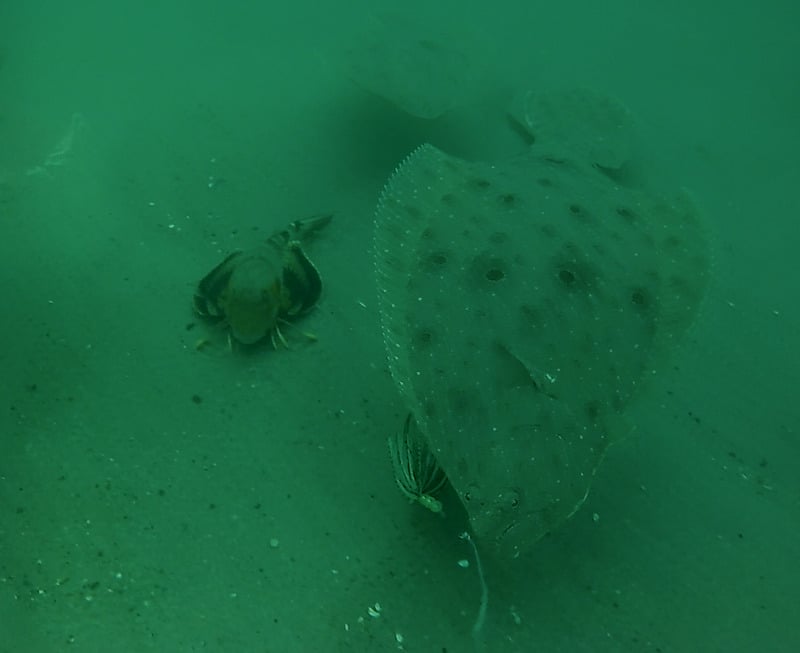
It may come as a surprise to you, but yes, sea robins are entirely edible! According to the research I've done online, searobins are actually quite common in European cuisine. Many international chefs use searobin to introduce subtle flavor into a dish.
Since sea robins carry a robust structure, they are also used in soups and stews like bouillabaisse.
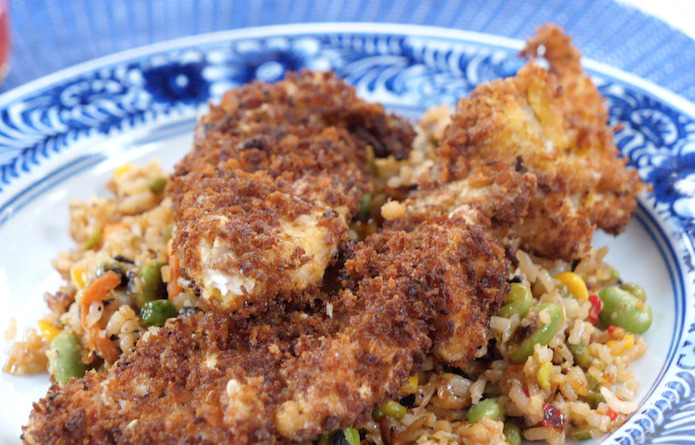
Let me show you how to fillet a sea robin so you can start enjoying this tasty, local, commonly caught fish.
How to Fillet and Clean a Sea Robin
The first thing to keep in mind is to be very careful handling these fish. Be sure you are wearing thick gloves when handling sea robins. The armor of the searobin is very prickly and can easily scrape or puncture your hand.
There are numerous ways to clean a sea robin, and please keep in mind that this video was only the second time I've ever filleted a sea robin. I have plenty of learning and practice left to do!
Nevertheless I ended up with a nice piece of tail meat which was white, flakey and delicious when pan fried.
To learn more about how to fillet and how to clean searobins, please consult these helpful YouTube videos:
Have I Convinced You To Try Eating Sea Robin?
The biggest challenge sea robins face is the lack of knowledge we anglers have about them and their habits.
Even though sea robins are called trash fish, they can be cleaned, filleted, and eaten with success!
For me, each new fishing season is an opportunity for trying out new foods and making the most of everything I catch.
I'm looking forward to keeping that theme going throughout this upcoming season.
Tight lines!



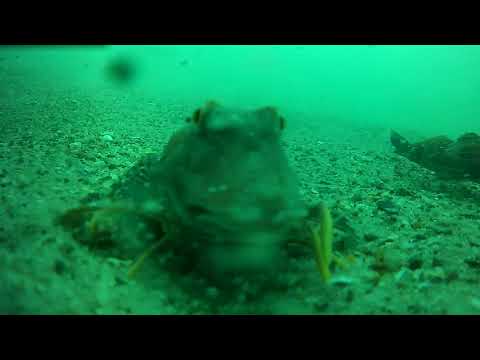


I have been throwing sea robin fillets in the same bag with seabass and fluke for years and my kids never knew the difference. They would be horrified when they caught one and I would just smile to myself. If they only knew how many they had eaten over the years I would be in big trouble. I only keep the real large ones. They smaller ones aren’t worth the hassle.
Ryan you covered about every way that you will catch a sea robin , which we often have done out in cape Cod bay by boat. WE also call them croakers for the sound they give off. I have tried to tell my young friend that as you have found that indeed they are great to eat . However they most times are given a kiss and let go to swim along the ocean floor until the nest time thy get caught It is noted that you used the words in regards to what some call these scavengers and was glad to see that you have found those words trash fish not a good choice of words , WE agree as all fish that swim our waters can be cooked and eaten for some protein and in another time during the early times many such fish were consumed to obtain the enrichment of eating it. Such as the tom cod, sclupin[sp] Sea Perch , skate to mention some species that provided nutrients for the soul Peace and Prayers
Very interesting post.Thanks a lot for sharing this post.
My pleasure Mike. Thanks for reading!
Years ago, I caught a sea robin off the jetty at the east end of the Canal. I was fishing for flounder when this wierd thing came in. Sandy bottom, 10-15 feet of water.
You never know what you’re going to catch when you cast a line into the canal. Thanks for the comment Mark!
Growing up on the Jersey shore my family caught a LOT of sea robins in the surf. We learned a neat way to clean them by slitting their belly and pulling the viscera out with the head (we cleaned blowfish the same way). We also heard sea robin referred to as ‘sea squab’
Good comment! Thanks Ed for chiming in. Sounds like you have some excellent sea robin memories from back in the day. I’ve also read about them being called sea squab years ago.
Hi Ryan, excellent and informative article about the bane of the Southern New England bottom angler. The aggressive and adaptive nature of sea robins makes them strong competitors of the more desirable species we pursue and makes me wonder if their apparent abundance may contribute to the current paucity of fluke in our coastal waters.
One of my former colleagues nicknamed “seagull” urged me to try sea robins and I recall them being tasty but quickly forgotten as table fare in favor of more desirable species. He also asserted that sea robins were marketed in WWII as “sea squab” to help fill the public’s seafood needs since much of the NE groundfish supported the war effort. A quick search didn’t support these assertions but I’ll dig a little deeper.
I’ll also contact the folks in my former agency who run the revised seafood marketing program and get their perspective on a possible promotional effort. Back in the day, when I became an administrator in DMF, I supervised our seafood marketing program which promoted greater per capita consumption of US caught fish and underutilized species such as squid, dogfish, skates and the like.
Hey Phil, those are some interesting points regarding sea robins and the poor fluke fishing in many spots which used to be reliable fluke hot spots. I also like the little piece of WWII history! However, I would imagine that the term “sea squab” probably didn’t help gain public interest in the species. LOL.
I’m happy to assist with any promotional ideas, as I’m already enjoying trying out “less desirable species” such as sea robins and dogfish. I actually have a dogfish eating post scheduled to publish later this winter. Honestly, I thought smooth dogfish tasted just as good as most fish I’ve eaten. I was shocked at how delicious the dogfish was when pan fried. I also had skate wings for the first time in 2021 and I thought they were equally delicious.
That was the information I was looking for. I certainly will be catching and eating them this Summer. Thanks!
Sounds good Brian. Be sure to let us know how it goes by posting in the forum! Good luck!
Sea robin, sculpin, oyster toadfish, ocean pout …… have caught a LOT of those over the last few seasons ….. never brought one home for dinner! A quick search of the web finds multiple videos of catching – cleaning – cooking these fish. Maybe someday …..
Let me know if you give any of those species a try during 2022 Jack. I would definitely be interested to hear about it.
my father in law ,god rest his soul, told me to eat the tail meat and it was good. one of my fishing friends prefers them over scup. just recently i saw on u tube how to skin them similar to skinning an eel. you end up with a white fish drumstick.also nice work by you and your whole team!
Thanks for the comment Bob, and it’s nice to hear that your your father-in-law was a fan of eating sea robins. It’s definitely a bit more work to clean sea robins, but that tail meat is certainly tasty. Thanks for the comment and I’m glad you are enjoying MFCC. 🎣